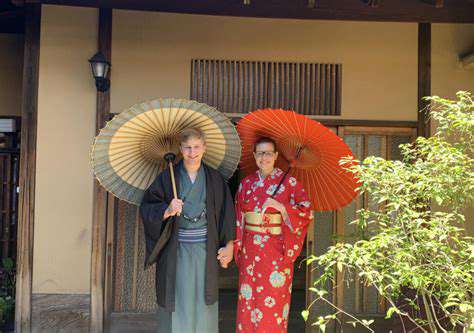Planning a Romantic Honeymoon in Italy
Ancient Wonders
Rome boasts an unparalleled collection of ancient landmarks, each whispering tales of emperors, gladiators, and the Roman Empire's golden age. The Colosseum, a breathtaking amphitheater, still stands as a testament to the grandeur of Roman engineering. Imagine the roar of the crowd as gladiators clashed or the hushed anticipation before a captivating spectacle. Exploring its intricate arches and subterranean tunnels offers a glimpse into the daily lives of those who once inhabited this iconic structure. Beyond the Colosseum, the Roman Forum, a sprawling complex of temples, public spaces, and government buildings, reveals the heart of ancient Roman political and social life. Delving into these historical sites provides a profound understanding of the civilization that shaped Western culture.
The Pantheon, a marvel of architectural ingenuity, is another must-see. Its awe-inspiring dome, perfectly proportioned and seamlessly integrated with the surrounding structure, is a testament to the Roman mastery of engineering. Stepping inside the Pantheon, one is struck by the ethereal light that filters through the oculus, creating a breathtaking interplay of light and shadow. The sheer scale and elegance of this ancient temple are truly unforgettable.
Beyond the Tourist Trail: Hidden Gems
While the iconic landmarks are a must-see, venturing beyond the crowded tourist areas unveils hidden gems that offer a more intimate and authentic Roman experience. Tucked away in the charming alleyways and quiet piazzas, you'll discover charming trattorias serving traditional Roman cuisine, where the aroma of fresh pasta and roasted meats fills the air, inviting you to savor the local flavors. These hidden culinary treasures offer a glimpse into the heart of Roman life, away from the bustling tourist hubs.
Exploring the charming neighborhood of Trastevere, with its cobbled streets and picturesque squares, is another rewarding experience. Lose yourself in the labyrinthine streets, discovering hidden courtyards and enjoying the vibrant atmosphere. The neighborhood's unique character and atmosphere provide a respite from the often-overwhelming crowds found in the city center, offering a more intimate and authentic Roman experience. You'll discover local shops selling handcrafted goods and art, adding to the area's unique charm.
Beyond the obvious sights, Rome's hidden gems are waiting to be discovered. These smaller, less-visited locations offer a deeper understanding of Roman culture, history, and daily life, making for a far more enriching experience.
Gradient descent is a fundamental optimization algorithm used in machine learning to find the minimum of a function. It works by iteratively moving in the direction of the negative gradient of the function, aiming to reach the lowest point. This iterative process involves calculating the gradient at each step, which represents the direction of the steepest ascent, and then taking a step in the opposite direction to descend. This process continues until a minimum is reached, or a predetermined tolerance is met.
Indulging in Italian Delights: A Culinary Journey for Two

A Culinary Journey Through Italy
Italy, a land of passionate artistry, rich history, and breathtaking landscapes, is also renowned for its exquisite cuisine. From the vibrant flavors of the Mediterranean to the rustic simplicity of the countryside, Italian food offers a sensory experience that captivates the palate and soul. This culinary journey promises to tantalize your taste buds and transport you to the heart of Italy, without ever leaving your kitchen.
Regional Variations in Italian Cuisine
Italian cuisine is not a monolithic entity; rather, it boasts a diverse array of regional specialties. From the hearty pasta dishes of the north to the fresh seafood of the south, each region offers a unique culinary identity. The use of locally sourced ingredients is paramount, reflecting the bounty of each region's terroir.
Different regions utilize unique ingredients and cooking techniques, leading to a vast tapestry of flavors. Understanding these regional differences enhances the appreciation of the diverse culinary heritage of Italy.
The Importance of Fresh Ingredients
A key element of authentic Italian cuisine is the use of fresh, high-quality ingredients. Farmers markets, local producers, and seasonal produce are central to the preparation of traditional dishes. This emphasis on freshness is crucial for achieving the vibrant flavors and textures that define Italian culinary excellence.
Pasta: The Star of Italian Cuisine
Pasta, a fundamental element of Italian gastronomy, is enjoyed in countless forms and variations. From the classic spaghetti carbonara to the delicate ravioli, pasta dishes reflect the creativity and ingenuity of Italian chefs. The preparation of pasta, from the dough to the sauce, is a testament to the passion and dedication of Italian cooks.
Beyond Pasta: Exploring Other Italian Dishes
While pasta is undeniably a star, Italian cuisine extends far beyond this iconic dish. From succulent pizzas to flavorful risottos, from hearty stews to light salads, the culinary landscape of Italy offers a rich tapestry of experiences. Each dish tells a story, reflecting the history, culture, and traditions of the region.
The Art of Italian Cooking: Mastering Techniques
Italian cooking is more than just the preparation of individual dishes; it's an art form that involves mastering techniques and understanding the nuances of flavor. From the proper kneading of dough to the skillful preparation of sauces, Italian cooks pay close attention to every detail. Authentic Italian cuisine is a testament to the importance of technique and precision in cooking.
Planning Your Honeymoon Budget and Logistics: Making it Effortless

Understanding Your Financial Goals
A honeymoon is a special trip, but it's also an investment in your future together. Before you start booking flights and hotels, carefully consider what you both want to achieve financially from this trip. Are you prioritizing relaxation, adventure, or creating lasting memories? Understanding these desires will help you set realistic expectations and a practical budget.
Defining your financial comfort zone is also crucial. How much are you willing to spend without feeling overly stressed? This self-assessment will guide your decision-making process throughout the entire planning phase, ensuring you stay within your means and don't compromise your financial stability for a wonderful trip.
Estimating Trip Expenses
Honeymoon budgets need to account for a wide range of expenses. These include flights, accommodation, activities, food, and souvenirs. Researching average costs in your chosen destination is essential to create a realistic budget. Using online travel resources, browsing hotel websites, and checking local activity listings can provide valuable insights into typical pricing.
Don't forget to factor in potential hidden costs, like visa fees or travel insurance. These seemingly small expenses can quickly add up if overlooked. Thorough planning, including estimating these potential hidden costs, will help you avoid any unwelcome surprises later on.
Setting a Realistic Budget
Once you have a clear understanding of your financial goals and estimated expenses, it's time to create a realistic budget. Use a spreadsheet or budgeting app to meticulously track your projected spending. This will provide a comprehensive overview of all potential costs, helping you make informed decisions.
Consider splitting the costs between you and your partner. This can make the budgeting process more manageable and ensure that both parties feel equally invested in the planning and execution of the budget. This shared responsibility can create a sense of partnership and mutual commitment.
Considering Accommodation Options
Accommodation options vary significantly in price. Luxury resorts often come with high price tags, while budget-friendly guesthouses or vacation rentals can offer a more affordable alternative. Analyzing different accommodation options is crucial for finding the right balance between experience and budget.
Think about your priorities. Do you value a luxurious experience or a more budget-friendly stay? Choosing the right accommodation based on your priorities and budget will ensure a comfortable and enjoyable experience. Evaluate the trade-offs between amenities, location, and cost to make the most informed choice.
Allocating Funds for Activities
Activities are a significant part of any honeymoon. Plan ahead and identify activities that align with your interests and budget. Consider free or low-cost activities, such as exploring local parks or visiting free museums, to help keep costs down.
Researching activities in advance can help you find deals and discounts. This can significantly reduce the expense associated with activities without compromising on the enjoyment of your trip.
Food and Beverage Expenses
Food and drinks can quickly eat into your honeymoon budget. Eating out every meal adds up to a substantial amount. Consider a mix of dining experiences, including both fine dining and casual meals at local eateries. This allows for a more diverse and budget-friendly approach.
Pack snacks for some meals. Even though it might not seem like a major cost-saving measure, it can significantly help you reduce your food and beverage expenditure.
Contingency Planning
Unexpected expenses are inevitable during any trip. Set aside a small contingency fund to cover unforeseen circumstances. This is an essential element of a responsible travel budget. Having a backup plan ensures that you can handle any unforeseen situations without compromising the overall enjoyment of your honeymoon.
This buffer provides peace of mind and allows you to adapt to unexpected events without undue financial strain. Having this contingency plan in place will make for a much more relaxing and enjoyable honeymoon experience.
![Planning a Family Camping Trip [Beginner's Guide]](/static/images/27/2025-04/MakingtheMostofYourCampingExperience.jpg)

![How to Pack a Carry On Only [Minimalist Guide]](/static/images/27/2025-05/AccessoriesandDocuments3AKeepingitCompactandOrganized.jpg)




![How to Find Cheap Flights: My Proven Hacks [2025]](/static/images/27/2025-05/BeyondtheBasics3AStrategiesforSavingEvenMore.jpg)



